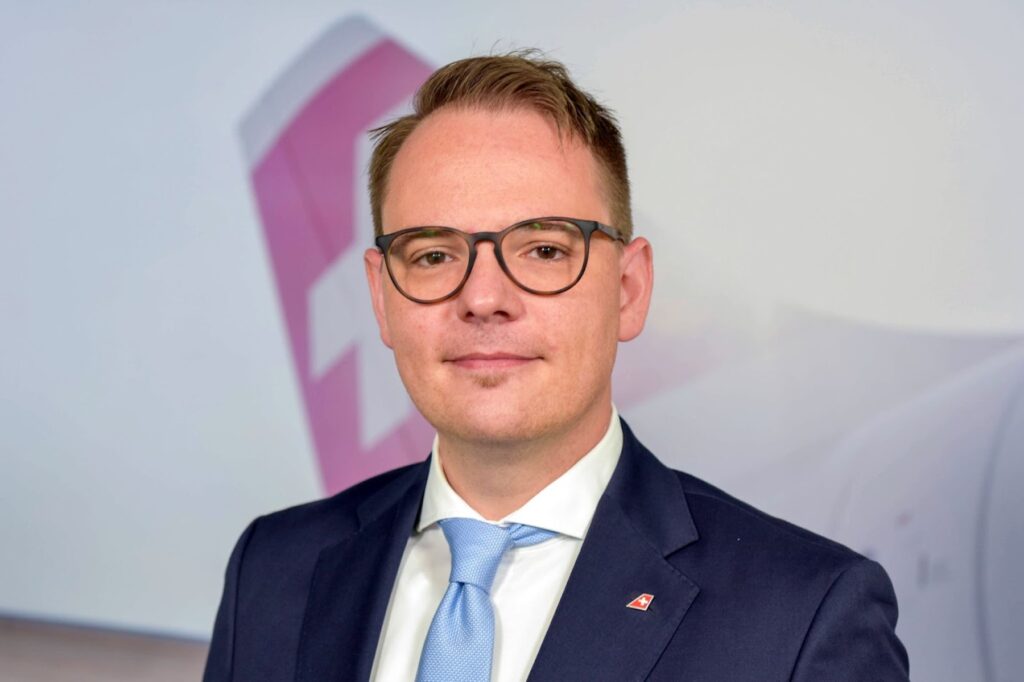William Pietersen is no stranger to innovation — particularly in business strategy. A Rhodes Scholar and Oxford University alumnus, Pietersen spent his career practicing law before launching a successful international business career. For over two decades, Pietersen was the CEO of multibillion-dollar businesses and served as an advisor to many well-known organizations, including Bauch & Lomb, Boeing, Deloitte, UGI, and the Girl Scouts. He has also been Professor of the Practice of Management at Columbia Business School since 1998. Today, Pietersen specializes in strategy and the leadership of change.
In his well-known book, Strategic Learning, Pietersen dives into the critical differences between planning and strategy to teach businesses to make informed decisions that benefit their employees, customers, and bottom line. Pietersen’s approach helps leaders foster a culture of learning and organizational buy-in by developing effective strategies and using an inclusive approach.
Recently, Pietersen took the time to discuss his book and how the concept of strategic learning, coupled with other concepts emphasized in Columbia Business School Executive Education’s Advanced Management Program, empowers executives worldwide to dynamically lead their organizations in rapidly evolving business environments.
How Do You Define Strategy?
To understand what strategy is, we have to understand its origins. It was created for one reason alone: the reality of limited resources. Because we have limited resources, we’re involved in a zero-sum game. Everything we do subtracts attention and effort from everything else we do. The important thing that emerges from that is choosing what we will and will not do with our limited resources to create a competitive advantage. That’s the essence of strategy.
A working definition arises from that premise. Everything flows from the reality of limited resources that forces us to make choices. My working definition is: strategy harnesses insight to make the best choices about where we will compete, our scope of operation, how we will win the competition for value creation in our chosen arena, and our key priorities for success. Strategy must answer three main questions based on insight: Where will we compete? How will we win? What will be our key priorities? Everything else is implementation.
What is the Difference Between Strategy and Planning?
There is a fundamental difference if you think about the outputs of a strategy and compare them with the outputs of a plan. They’re totally different. Attacking them in one process creates a toxic mixture — planning kills strategy stone dead. Strategy is about identifying the right things. Planning is about doing things right. You can’t do one without the other, but they can’t be done together. Identifying the right things comes first and, then through planning, you budget accordingly to do those things.
If you imagine running a railroad company, strategy determines where you lay the railroad tracks. Planning is making the trains run on time. You can’t do one without the other. That’s the simple difference between the two.
What Is Outside-In Thinking? Why Is It Essential to Success in the Modern Business Environment?
It starts with the simple realization that success occurs outside the boundaries of our organization, not inside. Inside is where we mobilize the resources to compete effectively outside, but success happens outside because that’s where the marketplace is. That’s where our customers are. That’s where our competitors are trying to stop us from being successful. The first order of business is always to understand the external environment, and then you can respond effectively to those realities. It’s essentially Darwinian.
The theory of evolution says that to survive in the longer term, which is about sustainability, we have to adapt successfully to the external environment. The external environment won’t adapt to us — we have to adapt to it. People find this difficult to understand because outside-in thinking is not natural. We tend, by nature, to think inside-out — think about ourselves, think about our organizations and the ways they are structured, and think about the people around us. We’re drawn inside, and it’s familiar.
We must shift from being “make and sell organizations” to “sense and respond organizations.” So we start not with a supply chain but with a consumption shape, which we convert into a supply chain that goes back into the marketplace. The world doesn’t care how we’re organized. The outside world only cares how it benefits.
That’s the most important conversation. What benefits will we organize and mobilize internally to deliver to the external environment? Those are the benefits that will win the competition for value creation. The enemy is not within; the enemy is outside. Put simply, we don’t sell products, and we don’t sell services. We sell benefits. The products and services are a means to deliver those benefits.
Why Is Strategy Everyone’s Job, Not Just Top Leadership?
The worst possible way of creating a strategy is for the senior team to go behind a veil of secrecy and brew up a plan, then hold a town hall meeting of some kind, announce the plan to everybody, and expect them to support it passionately. What you might get when you do that is compliance. You won’t get commitment.
Commitment comes from participation — people support what they help build. A central underpinning and foundation of applying strategic learning across a whole spectrum of organizations are the people working on teams to develop insights and situation analysis.
Suppose you tell somebody an insight — they will be mildly interested. If they discover it for themselves, they own it and want to act on it. People work in teams to develop the strategic choices answering these three questions: Where will we compete? How will we win? What will be our key priorities? Then they own it and can translate their priorities into implementation.
Can You Describe the Four-Step Process of Strategy? Is One More Important Than the Other?
Each step draws power from the previous step and confers power on the subsequent one. It’s a bit like an ecosystem of mutually supporting elements. If one part of an ecosystem malfunctions, it destroys the total ecosystem’s effectiveness or vitality. These steps are mutually interdependent, just like an ecosystem. They don’t work in isolation, only as a complete system.
What is essential for that system to function effectively is the sequence. We always start with the “Learn” step. That’s a situational analysis where we examine the external environment, the needs of our customers, and our realities. We gain a set of insights that help us make choices and start from there. Next, you make your choices. That’s the “Focus” step.
Lastly, you implement the “Alignment” and “Execution” steps. It goes in a sequence, and if you start in the wrong place, it won’t work. Intelligence proceeds operations, and structure follows strategy. If we get the sequence wrong, the system doesn’t work — it works only as a total system. To do it well, we need to understand the underlying principles that inspire the process in the first place. It’s not just a mechanical process. It’s a way of thinking.
How Has Your Career Experience Impacted Your Teaching?
I always put myself very much into the shoes of the corporate executives I work with. I see the world through their eyes because I’ve been there. I was a CEO for 20 years at various companies. If you think about corporate leadership and senior executive leadership, so much of it is about making effective decisions that lead organizations in the right direction with the proper purpose and priorities. You’re always making decisions along those lines.
Think about decision-making. Underneath every decision we make is a theory of what works best. Whether we’re conscious about explicitly saying this is my theory of success or not, we’re always working with theory as corporate executives. I would argue that corporate executives are the biggest users of theory in the world. I think our job on the teaching side is to make those theories of success explicit to help people make much more effective decisions. My philosophy is always to come up with the best theories that we can find about the topic at hand — strategic leadership in this particular case — regardless of where it comes from. If it comes from the military or another business, it doesn’t matter. The job is to put the best ideas on the table and to always couple them with a powerful process that translates them into action.
In that sense, I’m a pragmatist. I believe the test of a good theory is its usefulness in practice. I think theory must have problem-solving power for us to be useful, which is the way I look at this connection and draw from my prior operating experience. I’m a pragmatic theorist.
Why Should Executives Choose Columbia Business School Executive Education’s Advanced Management Program?
The program has some unique features that I think are very important for operating executives. Number one is that it’s located in New York City. It’s right in the beating heart of the business and financial systems of the United States, which puts us in touch with the real world. We’re in constant interaction with the real world and are not isolated from it in some high abstract sense.
The second is that there’s so much collaboration between faculty members. We understand we’re here to serve our customers at the end of the day. Not all universities like to call participants their customers, but I think we’re realistic about this because customers are people who have choices and needs.
The first order of business is for us to understand those needs. The approach I’ve found at Columbia, and I’m delighted with it, is always to ask myself who the customers we seek to serve here are. What are their most essential needs? How can we bring them the best thinking? It’s not just by telling everybody what we know but by putting together a well-designed program.
We’re not just going to tell you everything we know. The program addresses the specific needs of the participants. We are entering the digital world, and we have to adjust to that because that affects the needs of our customers. The program has a very realistic approach to the marketplace and the needs of the customers we seek to serve. No matter how brilliant it may be, an idea has no value until we’ve translated it into action.
Learning is only complete when it changes behavior, and I think we focus on that. It’s not just some great ideas that we play with, but the ways we embed them so that these concepts are useful throughout somebody’s career — not just during the program.
The blended program format of the Columbia Business School Executive Education Advanced Management Program can help you reach the next level in your career by connecting you with other driven professionals through online coursework and a career-changing immersion experience in New York City led by business experts. Apply today if you are a senior-level executive ready to maximize strategic learning to drive your organization forward.



